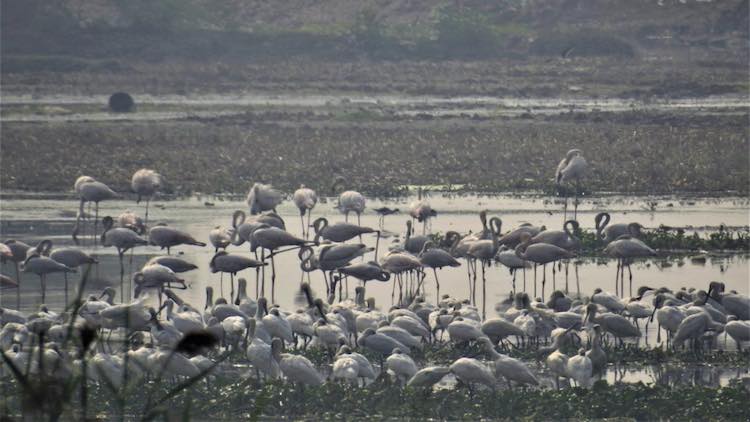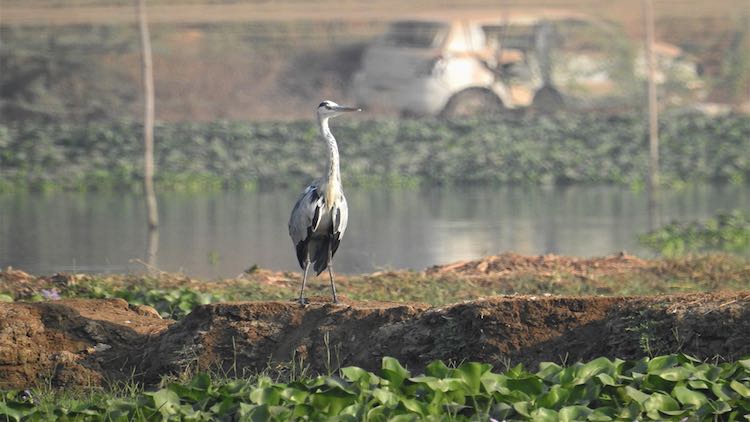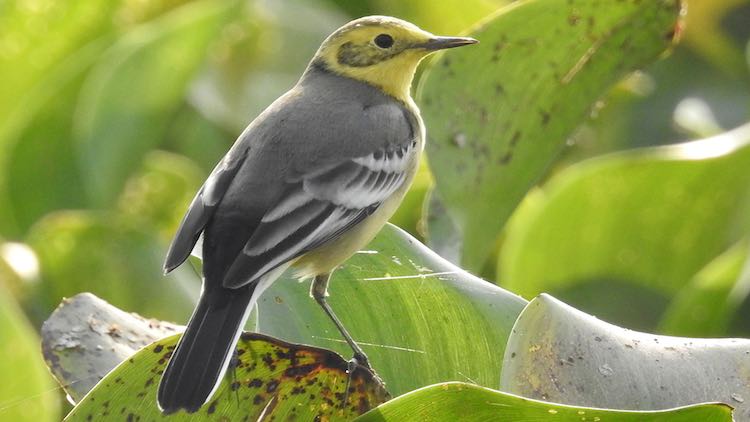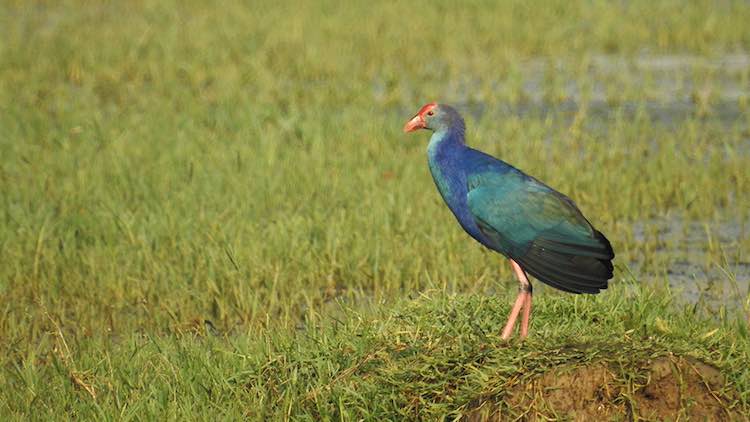Crucial To Bird Migration, India’s Wetlands Are Under Threat

By Rishika Pardikar, thethirdpole.net
The Najafgarh wetland in New Delhi and the Basai wetland in Haryana are important destinations within the Central Asian Flyway (CAF), one of the major migration routes for birds flying from Central Asia, Europe, Tibet, China and Russia to the Indian subcontinent during the winter. In fact, India – where wetlands (other than rivers) occupy about 10 million hectares – provides critical stopover sites to over 90% of the bird species known to use CAF migratory routes.
But these wetlands – which support biodiversity, recharge groundwater and provide crucial carbon sequestration services in this climate change era – are under serious threat from pollution and encroachment. “In urban areas, wetlands also filter waste water and help in reducing pollution load in water bodies – this is a nature-based solution for treating certain types of waste water,” Jagdish Krishnaswamy, senior fellow at the Suri Sehgal Centre for Biodiversity and Conservation, Ashoka Trust for Research in Ecology and the Environment (ATREE), told The Third Pole. A major impediment to mitigating such threats is the fact that many important wetlands in India, including Najafgarh and Basai, are not formally recognised as wetlands under the Wetlands (Conservation and Management) Rules, 2017 [Wetland Rules] despite both the wetlands hosting rich bird diversity. Basai is an Important Bird Area (IBA), an area identified using an internationally agreed set of criteria as being globally important for the conservation of bird populations. The criteria is largely based on whether the area hosts endangered species and large congregations. According to estimates by the Bombay Natural History Society (BNHS), the Basai wetland is home to more than 20,000 birds of about 280 different species.

But these wetlands – which support biodiversity, recharge groundwater and provide crucial carbon sequestration services in this climate change era – are under serious threat from pollution and encroachment. “In urban areas, wetlands also filter waste water and help in reducing pollution load in water bodies – this is a nature-based solution for treating certain types of waste water,” Jagdish Krishnaswamy, senior fellow at the Suri Sehgal Centre for Biodiversity and Conservation, Ashoka Trust for Research in Ecology and the Environment (ATREE), told The Third Pole. A major impediment to mitigating such threats is the fact that many important wetlands in India, including Najafgarh and Basai, are not formally recognised as wetlands under the Wetlands (Conservation and Management) Rules, 2017 [Wetland Rules] despite both the wetlands hosting rich bird diversity. Basai is an Important Bird Area (IBA), an area identified using an internationally agreed set of criteria as being globally important for the conservation of bird populations. The criteria is largely based on whether the area hosts endangered species and large congregations. According to estimates by the Bombay Natural History Society (BNHS), the Basai wetland is home to more than 20,000 birds of about 280 different species.

A grey heron at Haryana’s Basai wetland [Image by: Neha Sinha]

A citrine wagtail balances on water hyacinth in Basai wetland [Image by: Neha Sinha]

Grey-headed swamp hen in Basai wetland [Image by: Neha Sinha]
As for Najafgarh, though it isn’t recognised as an IBA, it is home to more than 281 species – migratory and resident. Threatened species found in the wetland include Egyptian vulture, Sarus Crane, Steppe Eagle, Greater Spotted Eagle, Indian Spotted Eagle and Imperial Eagle. It’s important to note that it’s not just water birds that migrate to India using CAF. So, while Greater Flamingos from Kazakhstan come to the shores of Gujarat and White-tailed Lapwings from Russia come to Delhi using CAF, raptors like Steppe Eagles from the steppes in Kyrgyzstan and Kazakhstan also winter in Delhi. A September 2020 paper also showed how Black-eared kites that spend winters around Delhi, including in Najafgarh, migrate for 3,300-4,800 kms, crossing the Himalayas at extremely high elevations (about 6,500 m above sea level). Migratory species that use CAF therefore undertake long, arduous journeys. And with climate change already disrupting migration patterns, wetland conservation is an even greater priority. For full story, go to thethirdpole.netLatest Videos
















